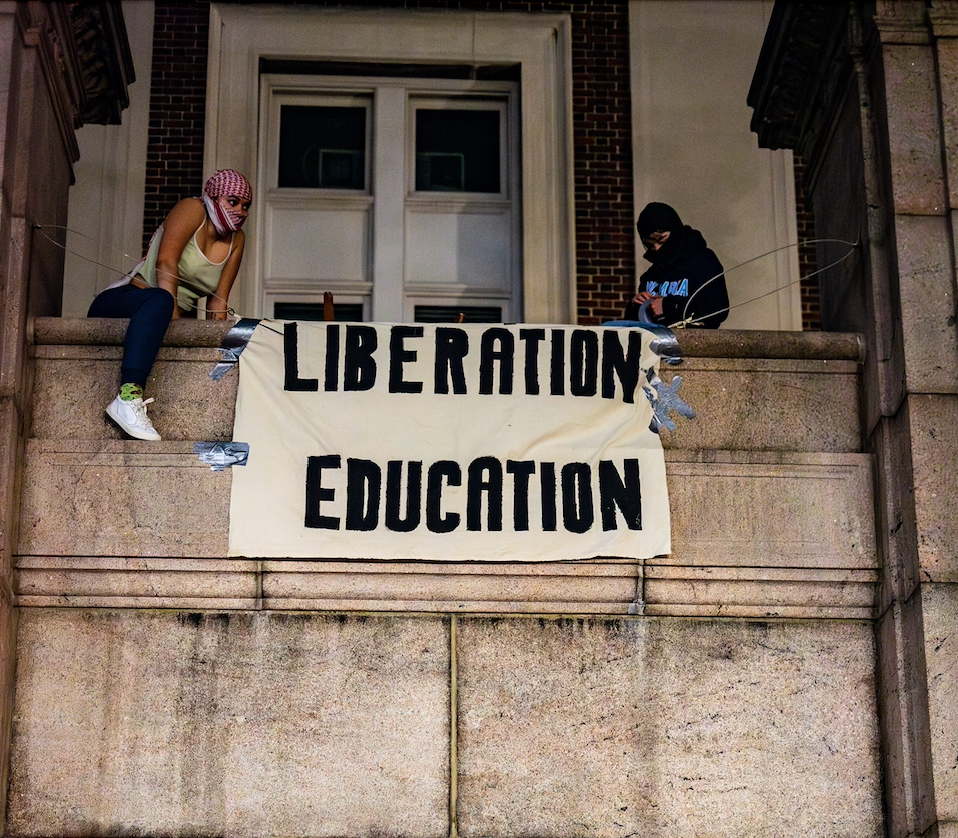What are those demands? The movement aims to isolate and put pressure on Israel to stop its bombing campaign in Gaza by forcing universities to divest from companies with ties to the Jewish state or that profit from the war. While protests on US campuses are being driven by the war in Gaza, their impact is transcending the conflict. Some of the demonstrations have featured antisemitic and intimidating chants and posters, while politicians on both sides of the aisle have made visits to college campuses to either support or condemn them.
Schools are striving to restore order before commencement season to avoid becoming the next University of Southern California, which canceled its main graduation ceremony after arresting more than 90 students last week.
But protesters aren’t concerned about graduation ceremonies. At Columbia, a new chant, “no commencement until divestment,” can be heard from the occupied building. Ali, a senior at The New School who was involved in the takeover of Parsons and requested anonymity, laughed when I asked if he was worried about missing graduation. “We are all pushing as hard as we can to get divestment before the end of school. That’s the priority,” he said.
He was optimistic they would succeed, at least on his campus. But the overarching goal of getting the largest university endowments to divest from Israel is certainly not going to happen before students go home for summer.
So what comes next?
Hamilton Hall, the building Columbia protesters occupied last night, was also taken over in the spring of 1968 during the Vietnam War. Demonstrators back then went home for the summer, only to resurface in the thousands at the Democratic National Convention in Chicago, and, long story short: Things got ugly. The gathering erupted into violence, leading to the activation of the National Guard and the arrest of hundreds of protesters.
This August, the DNC is also in Chicago, so could history repeat itself? When I asked students whether the movement would shift from university endowments to political events, the question took them off-guard.
“People aren’t really talking about what this is going to look like during the 2024 election," said Ali. “But what I do know is that people in this movement aren’t committed to voting for a certain party.” His statement echoed the disillusionment with political parties that I have heard again and again from student protesters.
“I don’t know how Joe Biden doesn’t realize he’s lost us,” said Julia Ye, a senior at NYU.
Cornel West and Jill Stein, two left-leaning third-party candidates, have both visited the Columbia University encampment in hopes of picking up the liberal youth vote. But it remains to be seen whether students will vote for either of them, especially if doing so makes it more likely that Donald Trump wins.
What’s clear is that students are confident the movement isn’t going on vacation. “Right now, all our focus is on university divestment,” said Ye, “but this energy isn’t going anywhere. It will just take a different shape over the summer.”
Students reported that throughout this year of university protests, they have seen their activist networks strengthen and expand, especially between schools. They have coordinated sending excess food donations between encampments in New York City, live-streamed the programming from different encampments across the country on their own, and been catalyzed by each other’s encounters with law enforcement.
“It was cool to see us moving in sync with the Columbia protests yesterday, even if it wasn’t officially organized,” said Gabriella, another senior at The New School who requested anonymity. “We are all watching each other on social media. We all want the same things. This movement is exploding, whether one person is calling for it to or not.”
